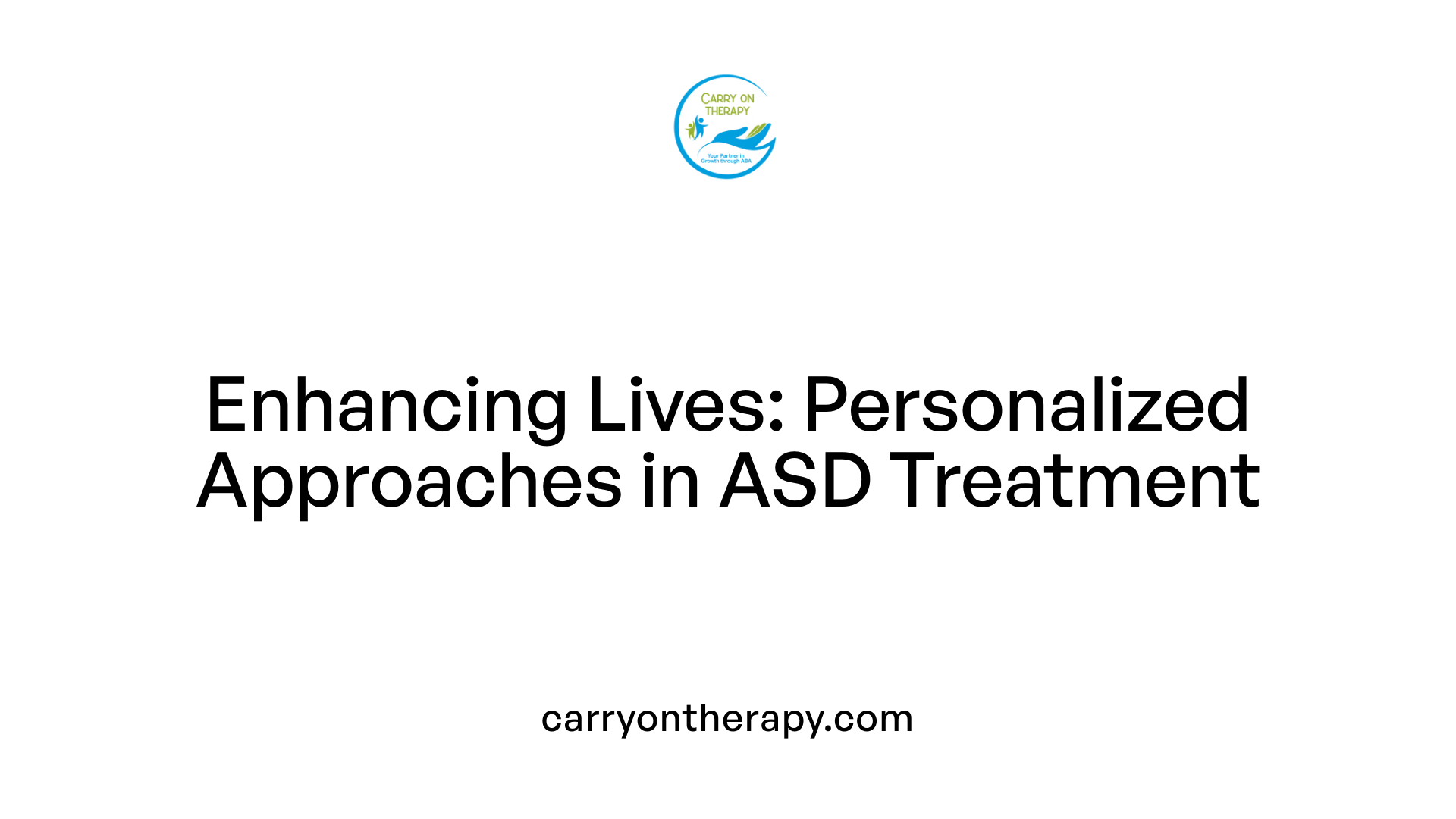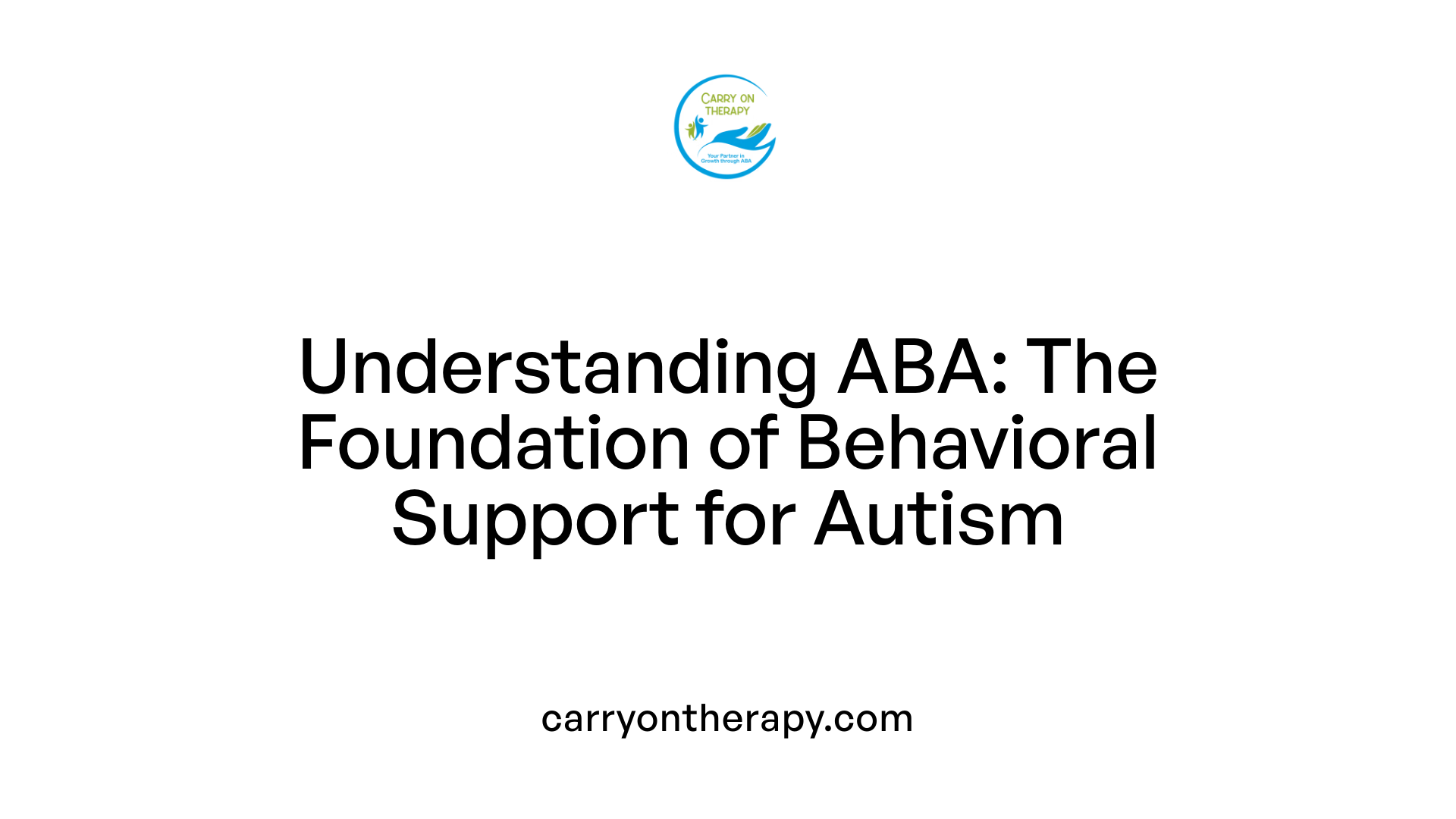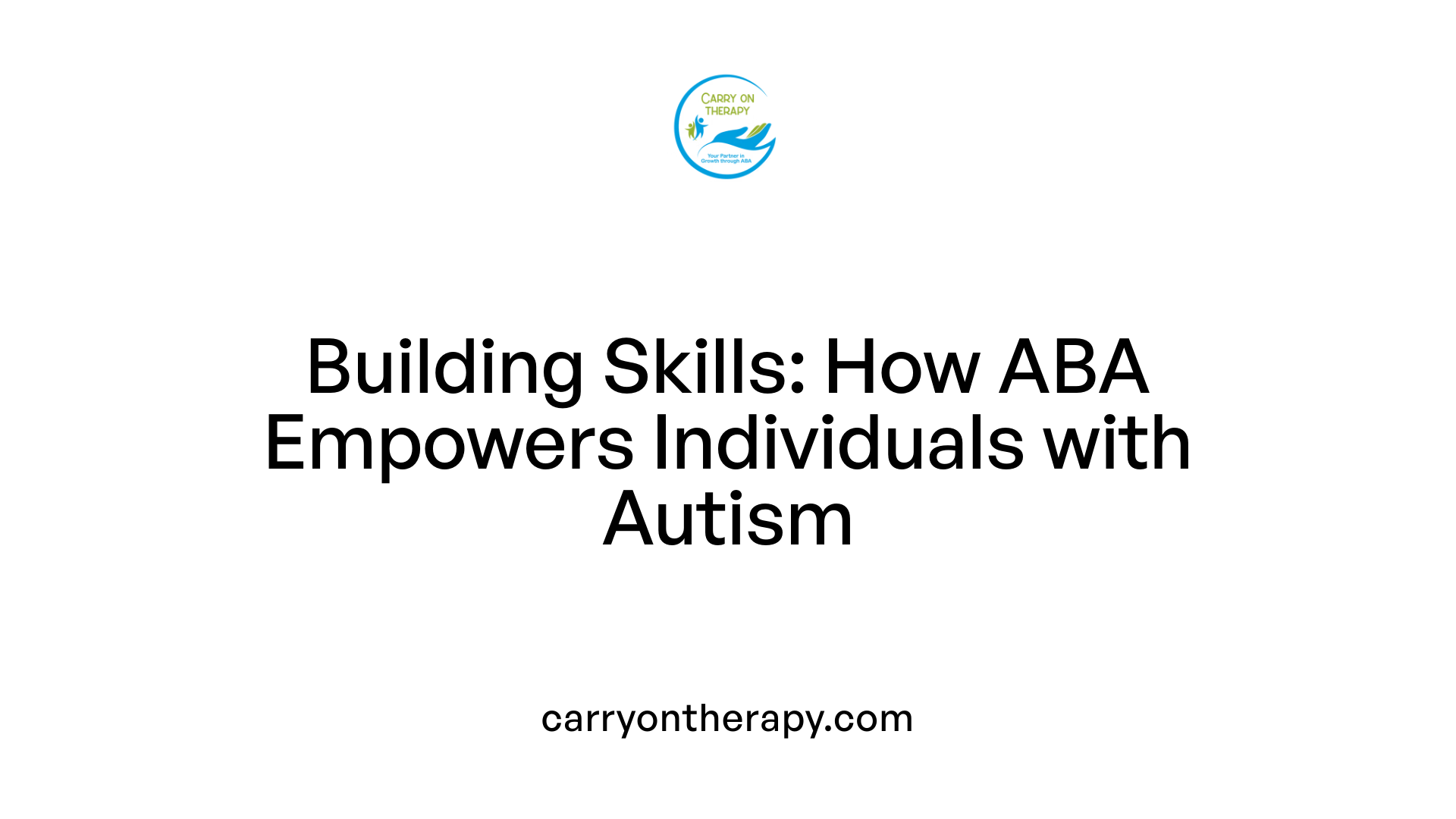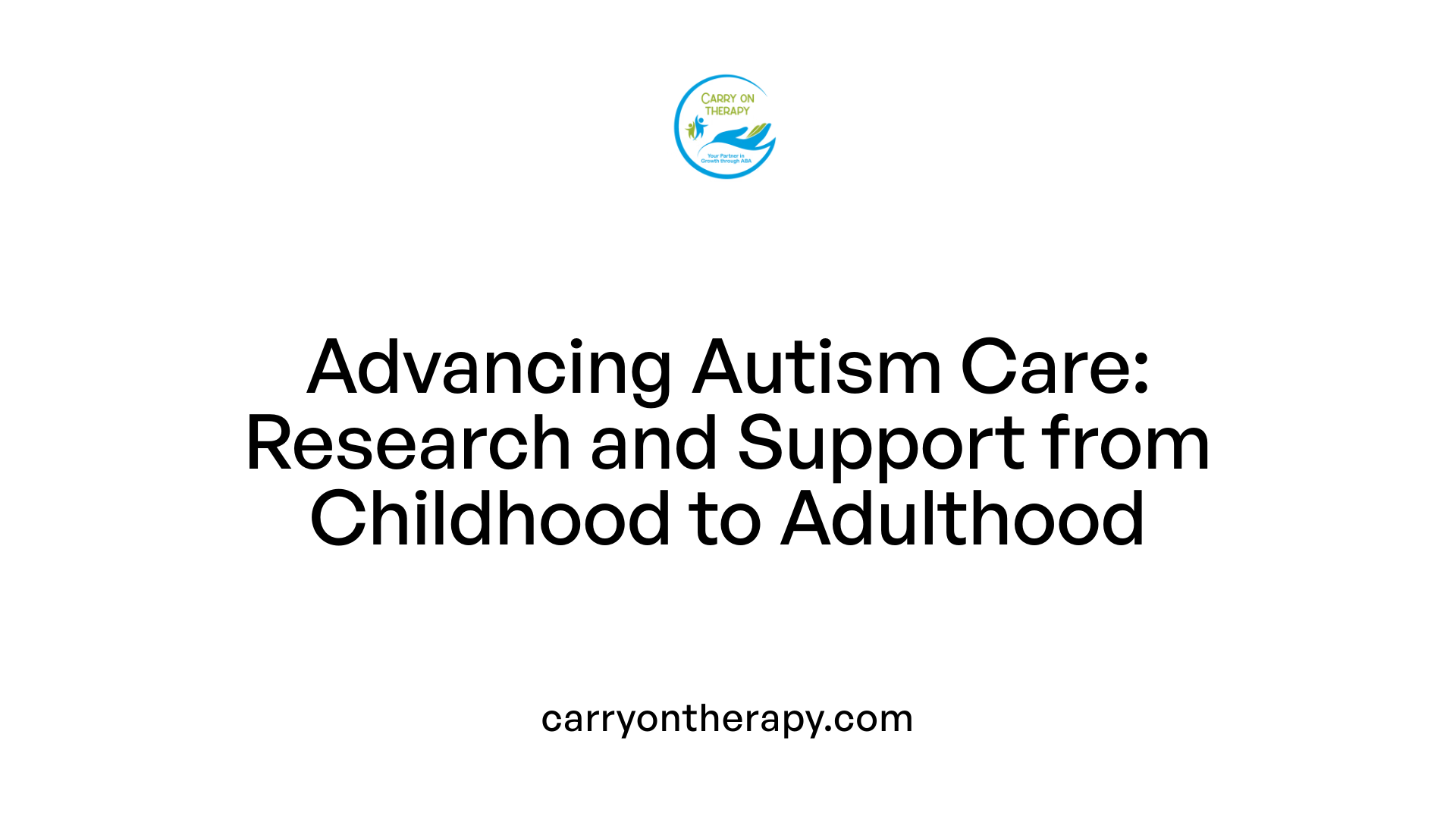Introducing Autism Spectrum Disorder (ASD)
Autism Spectrum Disorder (ASD) is a complex neurodevelopmental condition that affects communication, social skills, and behavior. Recognized for its broad range of symptoms and severity levels, ASD presents uniquely in each individual, making awareness and early intervention crucial. This article delves into what ASD is, its signs and symptoms, diagnostic methods, and the role of therapies such as Applied Behavior Analysis (ABA) in supporting individuals on the spectrum.
Defining Autism Spectrum Disorder and Core Characteristics
What is Autism Spectrum Disorder (ASD)?
Autism Spectrum Disorder (ASD) is a complex neurodevelopmental condition that affects brain development and impacts communication, social interaction, behavior, and learning. It is not a disease but a difference in brain functioning, with symptoms typically appearing in early childhood.
What Are the Core Features of ASD?
ASD is marked by challenges in social communication and interaction. Individuals may show decreased sharing of interests, difficulty understanding or using nonverbal cues, atypical speech patterns, and trouble forming or maintaining relationships. Another hallmark of ASD involves restricted and repetitive behaviors such as insistence on sameness, intense focus on specific topics, sensory sensitivities, and stereotypical movements like rocking or hand-flapping.
Why is Autism Considered a Spectrum?
The term "spectrum" highlights the wide range of symptoms and severities experienced by autistic individuals. This means some people may have mild difficulties and high cognitive abilities, while others might require significant support for daily functioning. The diversity calls for personalized approaches to support and intervention.
What is Known About the Neurological Basis of ASD?
ASD is linked to differences in brain areas involved in social and communicative functions, including the amygdala, hippocampus, frontal cortex, cerebellum, and brain stem nuclei. Genetic influences play a significant role, with multiple gene variations affecting synapse formation and brain development. Environmental factors may also contribute, but no single cause has been identified.
This understanding underscores the importance of early detection and tailored therapies to support the unique profiles of individuals with ASD.
Early Signs and Diagnostic Process
What Are Common Early Signs of Autism Spectrum Disorder Before Age Three?
Common early signs of autism spectrum disorder (ASD) often become noticeable before the age of three. Infants may exhibit decreased eye contact, reduced sharing of interests or enjoyment, and may not respond to their name by 12 months. Some children show delays in speech development or lose previously acquired language or social skills during this period.
What Behavioral Indicators Suggest ASD in Young Children?
Behavioral indicators in toddlers include challenges with social communication, such as difficulty engaging in back-and-forth interaction, limited use of nonverbal cues like gestures and facial expressions, and unusual speech patterns. Restricted and repetitive behaviors—such as hand-flapping, rocking, insistence on sameness, or fixation on niche interests—may also be observed.
How Do Specialized Professionals Contribute to the Diagnosis?
Diagnosis involves specialized evaluations by professionals experienced in child development, such as developmental pediatricians, child psychiatrists, psychologists, and pediatric neurologists. These experts conduct detailed interviews, observe the child's behavior and developmental history, and collaborate with families and caregivers.
What Standardized Tools Are Used for ASD Assessment?
Standardized assessment instruments, such as the Autism Diagnostic Observation Schedule (ADOS) and the Childhood Autism Rating Scale (CARS), play a critical role in formal diagnosis. Early developmental screening tools like the Modified Checklist for Autism in Toddlers (M-CHAT-R/F) are often used during routine pediatric visits to identify children needing further evaluation.
Why Is Early Detection Important?
Early detection allows timely intervention, which can significantly improve social, communication, and behavioral skills. Although there is no cure for ASD, evidence-based treatments initiated during the preschool years provide the best opportunities for supporting development and enhancing quality of life.
| Aspect | Description | Importance |
|---|---|---|
| Early Signs | Limited eye contact, delayed speech, lack of social reciprocity | Enables prompt monitoring and intervention strategies |
| Behavioral Indicators | Repetitive behaviors, restricted interests | Helps differentiate ASD from typical development |
| Specialized Evaluations | Assessments by developmental specialists | Ensures accurate and comprehensive diagnosis |
| Standardized Tools | ADOS, M-CHAT-R/F, CARS | Provides objective assessment and comparability |
| Early Intervention | Initiation of therapy during preschool years | Improves long-term social and communication outcomes |
Genetic and Environmental Factors in ASD
What Are the Genetic Contributions and Heritability Estimates for ASD?
Autism spectrum disorder (ASD) has a strong genetic component, with heritability estimated at about 50%. Multiple gene variations contribute to the condition rather than a single gene, making the genetic causes complex. These genetic factors influence brain development and function, particularly in areas related to social interaction and communication.
Which Genetic Conditions Are Associated with Increased ASD Risk?
Certain genetic disorders increase the likelihood of developing ASD. Fragile X Syndrome and Tuberous Sclerosis are two notable conditions linked to autism. These disorders involve gene mutations affecting neurological development, contributing to ASD symptoms. Other associated genetic conditions include Rett syndrome and phenylketonuria, each influencing ASD risk through distinct genetic mechanisms.
What Environmental Factors Increase ASD Risk?
Environmental influences also play a role in ASD. Prenatal exposures to factors such as rubella infection, influenza, maternal obesity, and certain chemicals can raise the risk. Medications taken during pregnancy, particularly valproate and carbamazepine, have been associated with a higher chance of autism. Additionally, advanced parental age, pregnancy complications, prematurity, and low birth weight are recognized risk factors.
Are Vaccines Linked to Autism?
Scientific studies have conclusively shown that vaccines do not cause autism. This myth has been thoroughly discredited by extensive research. Vaccination remains important for preventing serious infectious diseases and is recommended for children, including those with ASD.
How Complex Is the Etiology of ASD?
ASD is a neurodevelopmental disorder with multifactorial causes involving an interplay of genetic and environmental factors. The heterogeneity in symptoms and severity reflects this complexity. Genetic predispositions may interact with prenatal and perinatal environmental exposures, resulting in varied presentations of ASD. No single cause explains all cases, and research continues to uncover additional contributing elements.
Behavioral and Developmental Challenges in Autism
What are the social communication deficits in autism?
Individuals with autism spectrum disorder (ASD) commonly face challenges in social communication. These include reduced sharing of interests, difficulty interpreting and using non-verbal cues like eye contact and facial expressions, atypical speech patterns, and trouble starting or maintaining conversations. Challenges also extend to forming and maintaining social relationships, which can affect everyday interactions.
What restricted and repetitive behaviors are typical of ASD?
ASD is characterized by restricted interests and repetitive behaviors. Individuals may display stereotypical movements such as hand-flapping or rocking. They often have a strong insistence on sameness and routine, finding changes especially difficult. Intense focus on specific or niche topics is common, which can help develop expertise but also limits flexibility in activities.
How do sensory sensitivities affect those with ASD?
Sensory hypersensitivities are frequent among individuals with ASD. They might be unusually sensitive to sounds, lights, textures, or tastes, which can cause discomfort or distress. These sensory responses reinforce restricted behavior patterns and can affect daily functioning, sometimes leading to anxiety or avoidance behaviors.
Is intellectual functioning consistent among individuals with autism?
Intellectual abilities among people with autism vary widely. Some have lower than average intelligence and learning difficulties, while others possess average or above-average intelligence. Regardless of cognitive level, many autistic individuals struggle with social skills and applying knowledge to real-life social situations.
What co-occurring health and mental conditions are common?
Many individuals with ASD experience additional health and mental health challenges. Common co-occurring conditions include anxiety disorders, attention deficit hyperactivity disorder (ADHD), depression, epilepsy, and sleep disturbances. These conditions can intensify behavioral difficulties and require integrated management alongside autism-specific therapies.
The Goals and Scope of ASD Treatments

No Cure But Focus on Improving Daily Functioning
Autism spectrum disorder (ASD) has no known cure, but treatment aims to enhance daily functioning and quality of life. Early intervention can significantly improve behavioral, social, and language abilities, allowing many individuals to lead fulfilling lives.
Range of Therapies Addressing Communication, Behavior, and Social Skills
Treatments encompass a variety of therapies:
- Applied Behavior Analysis (ABA): A well-established behavioral therapy that promotes helpful behaviors and reduces harmful ones through reinforcement techniques.
- Speech and Language Therapy: Focuses on improving communication abilities.
- Occupational Therapy: Helps with daily living skills and sensory sensitivities.
- Social Skills Training: Improves social interactions through targeted developmental or social-relational approaches.
Supporting Co-occurring Conditions
Many individuals with ASD experience additional challenges such as anxiety, ADHD, or irritability. Medications like aripiprazole and risperidone may be prescribed to manage symptoms when behavioral strategies alone are insufficient. Psychological therapies, including cognitive-behavioral therapy (CBT), also aid in coping with mental health conditions.
Role of Individualized and Multidisciplinary Approaches
Effective treatment is highly individualized, designed by teams including behavior analysts, speech therapists, pediatricians, and psychologists. Assessment and goal-setting are ongoing, with adaptation to the person's age, abilities, and needs.
Settings for Therapy Delivery
Therapies are delivered across various environments such as homes, schools, clinics, and community programs, emphasizing coordinated support throughout a person’s daily life to maximize progress and independence.
What Is Applied Behavior Analysis (ABA) Therapy?

What is Applied Behavior Analysis (ABA) Therapy?
Applied Behavior Analysis (ABA) therapy is a scientifically supported method that helps understand and change behaviors, particularly for individuals with autism spectrum disorder (ASD). It focuses on increasing beneficial skills like communication, social interaction, and daily living, while reducing problematic behaviors.
How Does ABA Work?
ABA therapy examines behaviors in relation to the environment, using the "Antecedent-Behavior-Consequence" (A-B-C) model. This approach helps identify what triggers behaviors and what consequences maintain them. By modifying environmental factors and applying positive reinforcement, desired behaviors can be encouraged and strengthened.
ABA Techniques and Methods
ABA uses techniques such as:
- Positive reinforcement: Rewarding desired behaviors to increase their occurrence.
- Skill breakdown: Dividing complex skills into smaller, manageable steps.
- Discrete Trial Training (DTT): Structured teaching with clear prompts and responses.
- Naturalistic approaches: Learning in everyday settings to promote generalization.
Individualized and Professionally Supervised Programs
ABA programs are customized to the unique needs, age, and abilities of each individual. Qualified professionals, such as Board Certified Behavior Analysts (BCBAs), design and supervise these programs. They continuously collect data, assess progress, and adjust goals to optimize outcomes.
Family Involvement
Families play an essential role in ABA therapy. Their participation helps reinforce skills and behaviors outside therapy sessions, ensuring consistency and fostering a supportive environment.
ABA is widely recognized as an effective, evidence-based treatment for autism that supports meaningful improvements in communication, social skills, and adaptive functioning.
How ABA Therapy Supports Individuals with Autism

Skill Development in Communication, Social Interaction, and Daily Living
ABA therapy is designed to help individuals with autism acquire and improve essential skills. These include communication abilities, social interactions, and daily living tasks, which are often challenging for people with ASD. By focusing on these areas, ABA makes a real difference in everyday functioning and independence.
Behavioral Techniques Like Positive Reinforcement and Prompting
One of the defining features of ABA is its use of behavioral techniques such as positive reinforcement, where desired behaviors are encouraged through rewards. Prompting helps guide individuals to respond correctly, and these techniques work together to promote helpful behaviors and reduce harmful or challenging behaviors.
Breaking Complex Skills Into Smaller Steps
ABA practitioners break down complex skills into smaller, manageable steps, which makes learning more achievable. This task analysis approach allows for gradual learning where each step is taught and mastered before advancing.
Structured and Consistent Teaching Methods
The therapy emphasizes structured and consistent methods often delivered in natural environments. Teaching occurs using real-life situations to increase generalization of skills across various settings, ensuring that what is learned transfers to daily life.
Evidence of Developmental Improvements Especially With Early Intervention
Studies indicate that early and intensive ABA therapy can significantly improve language, social skills, attention, and independence. Early intervention maximizes outcomes, giving children a foundation for improved developmental trajectories.
ABA therapy, under the guidance of qualified professionals, is currently one of the most evidence-supported treatments for autism, aiming to enhance quality of life through individualized, data-driven support.
Who Provides ABA Therapy and How Is It Delivered?
Certification and Roles of BCBAs and Trained Therapists
Applied Behavior Analysis (ABA) therapy is provided primarily by Board Certified Behavior Analysts (BCBAs), professionals holding a master's or doctoral degree in psychology or behavior analysis. BCBAs design, oversee, and customize ABA programs tailored to individual needs. Treatment implementation is often carried out by trained therapists or technicians, including Registered Behavior Technicians (RBTs), who work under the supervision of BCBAs to conduct therapy sessions.
Delivery Settings: Clinics, Schools, Homes, Telehealth
ABA therapy is versatile and delivered across multiple environments to best suit the individual's needs. Traditional settings include clinics and schools, where structured interventions take place. Home-based therapy is common, providing naturalistic settings and comfort for the child. Recently, telehealth has emerged as a significant delivery mode, enabling remote access through digital platforms.
Growing Role of Telehealth and Its Models
Telehealth delivery of ABA services has expanded to improve accessibility, especially for families in rural or underserved areas. Models include parent coaching, live synchronous sessions where therapists guide parents or individuals in real-time, asynchronous activities like video reviews, and hybrid approaches combining in-person and remote therapy. Telehealth encourages collaboration between families and providers, enhancing ongoing communication and flexibility.
Benefits and Challenges of Remote Therapy
Telehealth increases convenience, reduces travel burdens, and can promote consistent therapy schedules. It engages caregivers actively in interventions, fostering generalization of skills across settings. Nonetheless, challenges exist, such as technological issues, concerns over client confidentiality, and difficulty establishing rapport remotely. Therapists require specialized training to navigate these obstacles and maintain the quality of care.
Family Collaboration and Access Considerations
Central to effective ABA therapy is the involvement of families, who often participate actively through coaching and regular communication. Telehealth facilitates more frequent family-provider interactions, empowering parents as key partners in treatment. Accessibility remains a focus area; while telehealth mitigates geographic barriers, disparities in technology access can limit participation for some families. Ongoing efforts aim to address these gaps for equitable service delivery.
Common Techniques Utilized in ABA Therapy

Positive reinforcement and its role
Positive reinforcement is fundamental in ABA therapy, involving rewarding desired behaviors to encourage their repetition. When a child exhibits an appropriate behavior, they receive a positive consequence—such as praise, tokens, or a favorite activity—which increases the likelihood of that behavior occurring again.
Prompting and fading techniques
Prompting provides cues or guidance to help initiate a desired behavior. These prompts can be verbal, gestural, or physical. Once the behavior is learned, prompts are gradually faded so the child can perform the behavior independently, promoting autonomy.
Discrete trial training and behavior chaining
Discrete Trial Training (DTT) breaks complex skills into small, teachable steps and teaches them systematically, one at a time, using repetition and reinforcement. Behavior chaining connects these individual steps in a sequence to teach a complete skill or routine, allowing children to accomplish complex tasks by building upon simpler actions.
Visual and video modeling methods
Visual modeling uses pictures, icons, or demonstrations to teach behaviors, while video modeling shows recorded examples of desired behaviors. These techniques help children with autism understand and imitate social and functional skills by providing clear and consistent visual input.
Extinction, redirection, and script fading
Extinction involves withholding reinforcement for unwanted behaviors to reduce their frequency. Redirection guides a child's attention toward appropriate activities or behaviors when challenging behaviors arise. Script fading gradually reduces reliance on rehearsed social scripts, encouraging more natural interaction in social situations.
Data-driven decision making in ABA
ABA therapy relies heavily on continuous data collection and analysis. Therapists observe and record behaviors meticulously to assess progress and adjust interventions accordingly. This data-driven approach ensures that treatment is customized and effective, promoting meaningful behavioral improvements.
These evidence-based techniques collectively form the backbone of ABA therapy, supporting skill acquisition and behavioral change tailored to individual needs.
Effectiveness and Criticisms of ABA Therapy
Evidence Supporting ABA's Impact on Communication and Adaptive Skills
Applied Behavior Analysis (ABA) is widely recognized as an evidence-based intervention that can significantly improve language, communication, social skills, and adaptive behaviors in children with autism. Studies report improvements in intellectual functioning and daily living skills, demonstrating ABA's ability to enhance functional independence.
Variability in Outcomes Based on Individual and Intervention Quality
The effectiveness of ABA therapy varies among individuals. Success depends heavily on the child's unique needs, the qualifications of the Behavior Analyst (BCBA), the intensity of therapy, and consistency in implementation. Programs tailored to developmental levels and continuously assessed for progress tend to yield better results.
Emphasis on Ethical, Individualized, and Naturalistic Methods
Contemporary ABA approaches emphasize individualized treatment plans that incorporate naturalistic and play-based methods. These strategies support generalization of skills across settings and promote emotional well-being, ensuring the therapy respects each child's preferences and comfort.
Critiques Concerning Overemphasis on Conformity and Behavioral Control
Despite its advantages, ABA therapy faces critiques related to an over-focus on conformity and behavioral control. Some argue that insistence on reducing behaviors deemed "undesirable" may negatively impact the child's self-expression and emotional health if not carefully managed.
Necessity of Tailored Approaches for Best Results
Given the spectrum nature of autism, it is clear ABA is not a universal solution. Tailoring intervention to individual strengths and challenges, along with incorporating family input, is vital. When delivered ethically and personalized, ABA remains a valuable tool in supporting individuals with ASD to improve their quality of life.
| Aspect | Description | Notes |
|---|---|---|
| Evidence Base | Demonstrated improvements in communication, social, and adaptive skills | Supported by research studies |
| Individual Variability | Outcomes depend on child needs, therapy quality, and consistency | Requires ongoing assessment |
| Modern ABA Approaches | Use of naturalistic, play-based, and individualized strategies | Enhances emotional well-being |
| Ethical Concerns | Potential risks include overemphasis on conformity and behavioral control | Importance of respecting individuality |
| Tailored Treatment Importance | Necessity to adapt programs to individual profiles for best outcomes | Collaboration with families recommended |
Looking Forward: Research and Support for ASD Throughout Life

NIMH-Supported Research Goals
The National Institute of Mental Health (NIMH) is deeply invested in advancing our understanding of ASD. Their efforts focus on identifying biological and behavioral characteristics of autism, tracking how symptoms evolve, and developing effective treatments and supports. The Autism Centers of Excellence Program exemplifies multidisciplinary research designed to uncover new insights that can improve lives.
Improving Early Screening and Customized Interventions
Early detection remains a critical priority. Research funded by NIMH aims to refine screening tools to identify autism signs swiftly and accurately during infancy and toddlerhood. Enhanced early screening facilitates timely, personalized interventions that target social communication and behavioral needs tailored to each child’s unique profile.
Supporting Autistic Individuals with Co-Occurring Conditions
ASD often overlaps with other mental health and neurodevelopmental issues such as anxiety, ADHD, and epilepsy. Current research explores integrated treatment approaches to address these co-occurring conditions simultaneously, thereby improving overall well-being and daily functioning for autistic individuals.
Importance of Inclusive Healthcare and Reducing Stigma
Ongoing studies highlight the importance of culturally competent and knowledgeable healthcare providers to meet the complex needs of autistic people. Reducing stigma through education and inclusive policies encourages better access to medical, social, and community services, fostering a supportive environment.
Planning for Adulthood Including Education and Employment
As autistic children grow into adults, research emphasizes the importance of planning for post-secondary education, employment, and social opportunities. Support systems aim to empower autistic individuals to lead fulfilling, independent lives with tailored strategies that nurture their strengths and address challenges.
| Area | Focus | Impact on ASD Community |
|---|---|---|
| NIMH Research | Biology, behavior, treatment innovation | Enhances understanding and evidence-based interventions |
| Early Screening | Enhanced tools for quick diagnosis | Enables early, personalized therapy for better outcomes |
| Co-Occurring Conditions | Integrated care for ASD plus other disorders | Improves mental and physical health outcomes |
| Inclusive Healthcare & Stigma | Provider education, policy advancement | Increases accessibility and acceptance |
| Adult Planning | Education and employment support | Promotes independence and quality of life for adults with ASD |
Summary and Final Thoughts on Autism Spectrum Disorder
Autism Spectrum Disorder is a diverse and lifelong condition characterized by differences in social communication, behavior, and sensory processing. While there is no cure, advances in understanding and intervention have empowered many individuals on the spectrum to develop critical skills and lead fulfilling lives. Applied Behavior Analysis stands as a cornerstone therapy supported by extensive evidence, offering tailored strategies that improve communication, social interaction, and adaptive behaviors. The path toward optimal outcomes involves early diagnosis, multidisciplinary treatment, family involvement, and respect for individual differences. Ongoing research and societal commitment remain vital to enhancing support, inclusivity, and quality of life for autistic individuals across their lifespan.
References
- What Is Autism Spectrum Disorder?
- Autism Spectrum Disorder - National Institute of Mental Health
- Autism spectrum disorder - Symptoms and causes
- Treatment and Intervention for Autism Spectrum Disorder
- Applied Behavior Analysis (ABA)
- Autism Spectrum Disorder - StatPearls - NCBI Bookshelf
- Autism Spectrum Disorder (ASD) Symptoms & Causes
- Autism Spectrum Disorder - Pediatrics
You have to Start to be Great!






